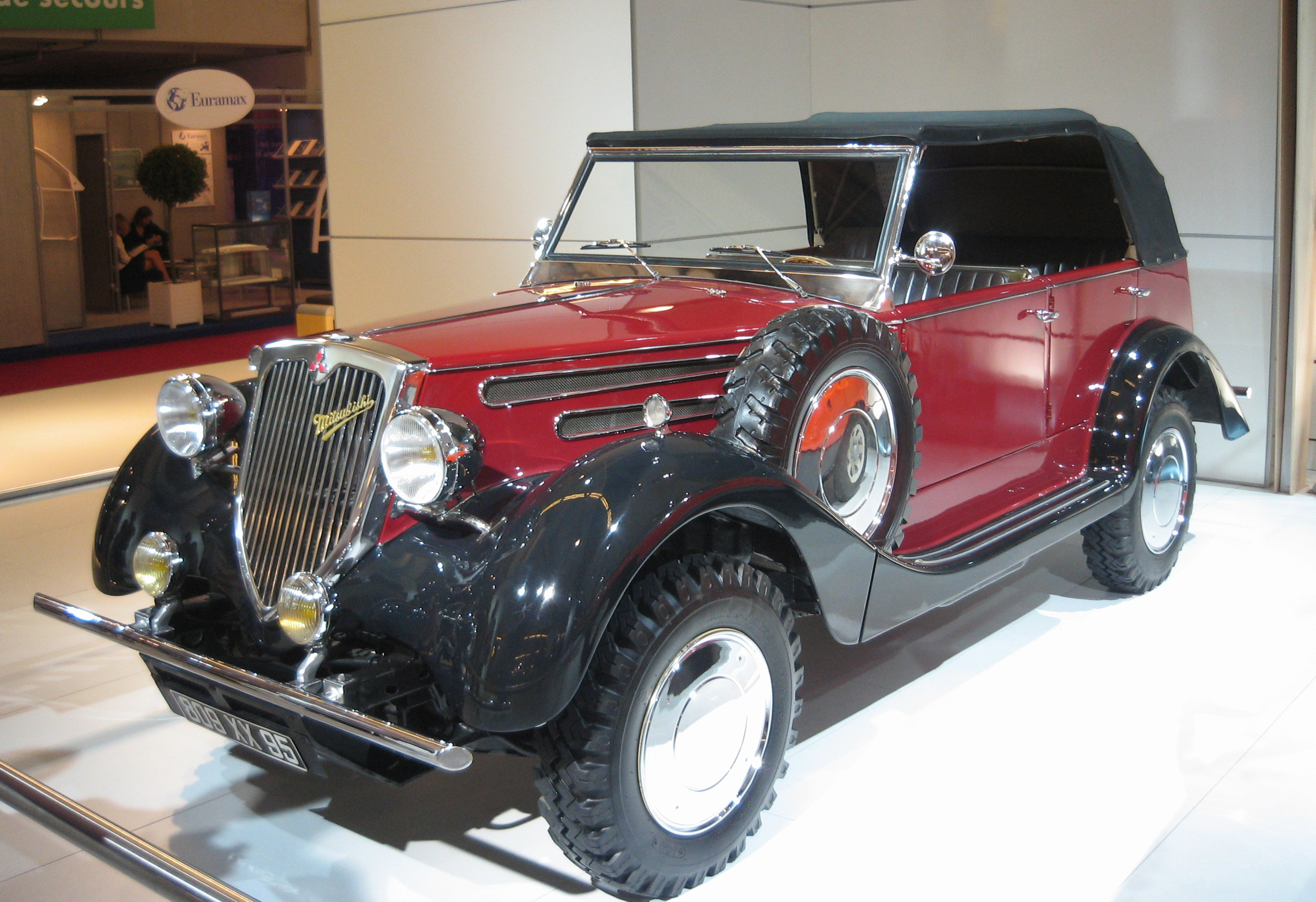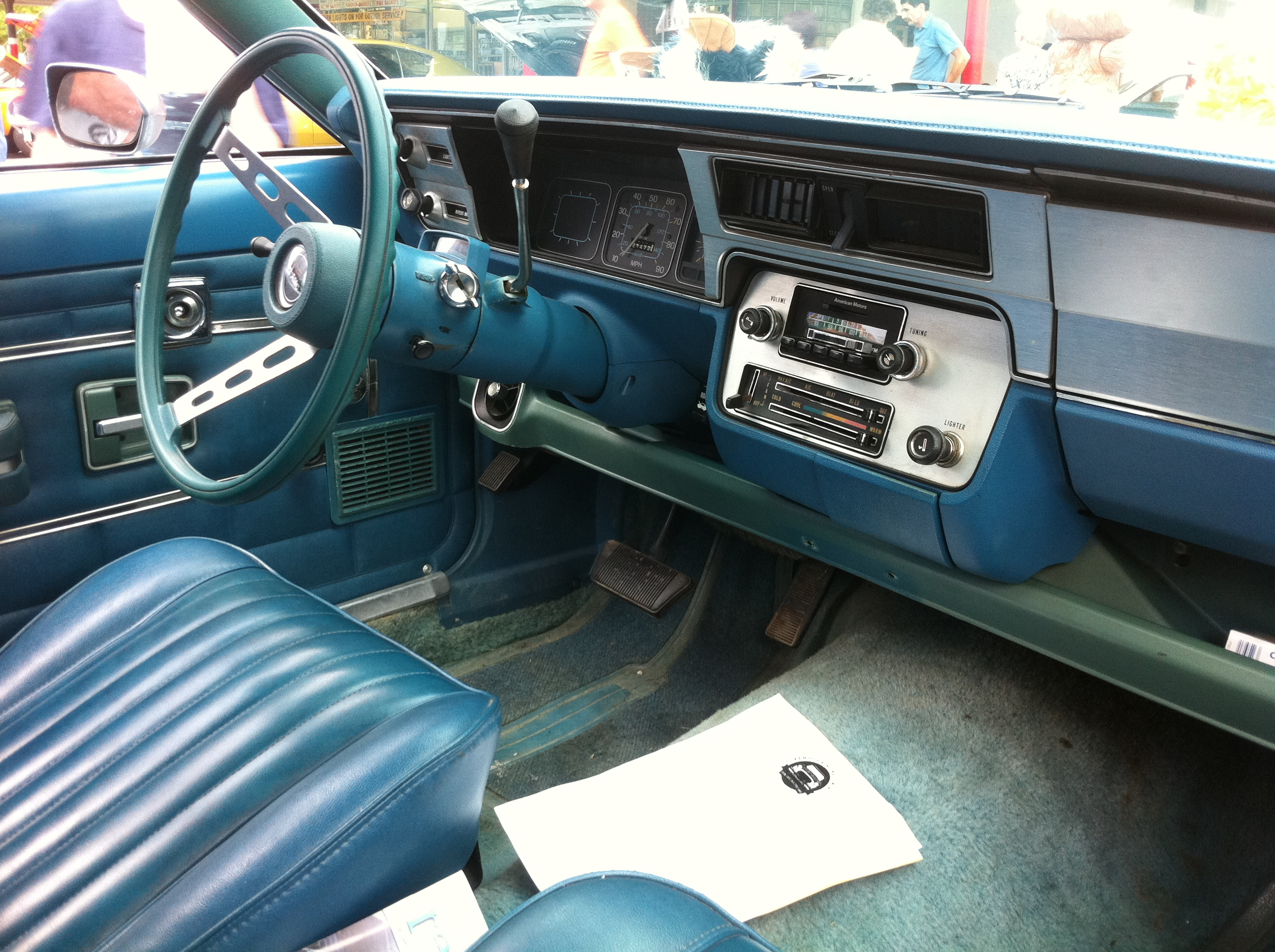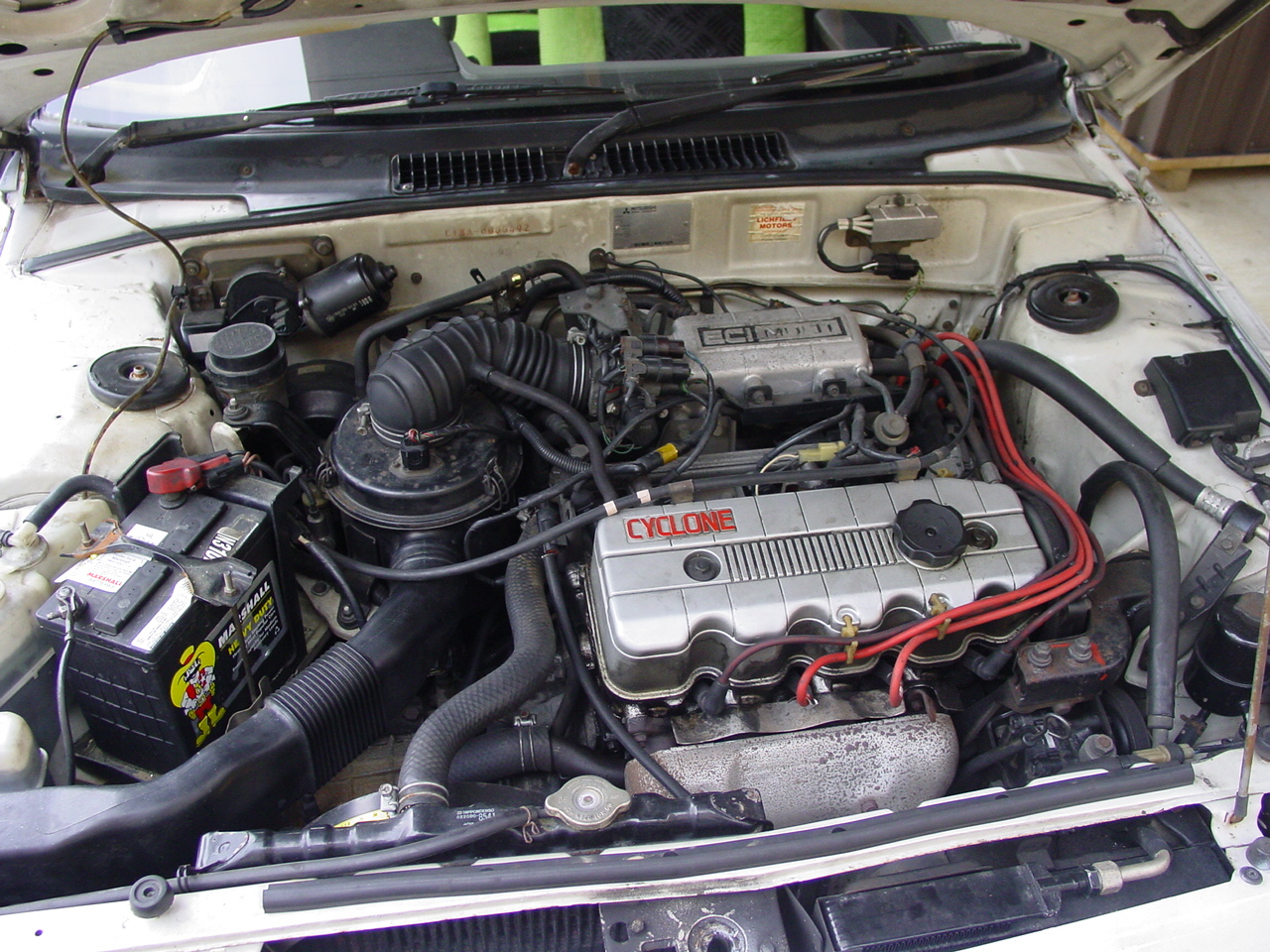|
Dodge Colt
The Dodge Colt is a subcompact car that was manufactured by Mitsubishi Motors and marketed by Dodge for model years 1971 to 1994 as captive imports. Rebadged variants include the Plymouth Champ and Plymouth Colt, both were marketed by Plymouth. The Colt was initially a rebadged variant of the rear-wheel drive Galant and Lancer families before shifting to the smaller front-wheel drive Mitsubishi Mirage subcompacts in 1979. First generation (1971-1973) Introduced in 1970 as model year 1971, the first generation Dodge Colt was a federalized first-generation Mitsubishi Colt Galant. Available as a 2-door pillared coupe, 2-door hardtop coupe, 4-door sedan, and 5-door wagon, the Colt had a 4-cylinder engine. The unibody layout was traditional, front engine and rear-wheel drive with MacPherson struts in front and a live rear axle. Standard transmission was a 4-speed manual, with a 3-speed automatic being an option. The engine was initially rated for , but dropped to in 1972 whe ... [...More Info...] [...Related Items...] OR: [Wikipedia] [Google] [Baidu] |
Mitsubishi Motors
is a Japanese multinational automobile manufacturer headquartered in Minato, Tokyo, Japan.Corporate Profile , Mitsubishi Motors website, 19 June 2008 In 2011, Mitsubishi Motors was the sixth-largest Japanese and the 19th-largest worldwide by production. Since October 2016, Mitsubishi has been one-third (34%) owned by , thus a part of the Renault–Nissan–Mitsubishi Alliance. Besides being part of the ... [...More Info...] [...Related Items...] OR: [Wikipedia] [Google] [Baidu] |
Hardtop
A hardtop is a rigid form of automobile roof, which for modern cars is typically constructed from metal. A hardtop roof can be either fixed (i.e. not removable), Convertible#Detachable hardtop, detachable for separate storing or retractable hardtop, retractable within the vehicle itself. The ''#Pillarless hardtops, pillarless hardtop'' (often referred to as simply "hardtop") is a Car body style, body style of cars without a B-pillar, which are often styled to give the appearance of a convertible design. Pillarless hardtops The pillarless hardtop (abbreviated as "hardtop") is a post-World War II car body designed with no center or pillar (car), B-pillar styled to resemble a convertible. If window frames are present, they are designed to retract with the glass when lowered. This creates an impression of uninterrupted glass along the side of the car. Although having a rigid metal roof, the stylists sometimes make the "hardtop" cars appear to be like a convertible with its ... [...More Info...] [...Related Items...] OR: [Wikipedia] [Google] [Baidu] |
Nissan Sunny
The is an automobile built by the Japanese automaker Nissan from 1966 to 2006. In the early 1980s, the brand changed from Datsun to Nissan in line with other models by the company. Although production of the Sunny in Japan ended in 2006, the name remains in use in China and GCC countries for a rebadged version of the Nissan Almera. In North America, the later models were known as the Nissan Sentra; in Mexico, the Sunny is known as the Nissan Tsuru, which is Japanese for the bird species " crane". The latest versions of the Sunny were larger than the early models, and may be considered compact cars. Earlier versions (through at least the B11 series) were subcompact cars. All Sunnys through the 1982 model year (except as noted below) used Nissan A engine motors. It was designed to compete with the Toyota Corolla. The "Sunny" name has been used on other Nissan models, notably various export versions of the Nissan Pulsar model line. The Sunny has been imported and later manufactu ... [...More Info...] [...Related Items...] OR: [Wikipedia] [Google] [Baidu] |
Honda Civic (first Generation)
The first-generation Honda Civic is an automobile that was produced by Honda in Japan from July 1972 until 1979. It was their first genuine market success, eschewing the air-cooling and expensive engineering solutions of the slow-selling Honda 1300 and being larger than the minuscule N-series. The Civic laid down the direction Honda's automobile design has followed since. Model year changes The Civic was largely developed as a new platform, and was the result of taking the previous Honda N600 and increasing the length, width, height and wheelbase. The engine displacement was almost double the N600 at , with two more cylinders and mounted transversely while using water cooling, benefiting from lessons learned from the Honda 1300. The straight-four engine produced roughly and standard features included power front disc brakes, vinyl seating, reclining bucket seats, and a woodgrain-accented dashboard. The hatchback version added a fold-down rear seat, an AM radio, and cloth up ... [...More Info...] [...Related Items...] OR: [Wikipedia] [Google] [Baidu] |
Toyota Corolla (E20)
The Corolla E20 was the second generation of cars sold by Toyota under the Corolla nameplate. Launched in May 1970, it featured "coke bottle styling" and had a longer wheelbase. The front suspension design was improved greatly, using a swaybar, however the rear remained relatively similar. The Corolla became the second-best selling car in the world that year. Grades for sedan were Standard, Deluxe, and Hi-Deluxe. The coupé was offered in Deluxe, SL, SR, and Levin ("levin" is Old English for "lightning") trim levels. History Minor changes were made in September 1971 with a new grille, turn signal lights, and tail lights, along with similar treatment to the Sprinter. A further facelift was done in August 1972. The E20 Corolla was also used as the basis for the 1974 Daihatsu Charmant. The E20 series was the first Corolla marketed in Indonesia, where it was sold between 1971 and 1975. Japan (1970–1978) Most models stopped production in July 1974 but the KE26 wagon and van were ... [...More Info...] [...Related Items...] OR: [Wikipedia] [Google] [Baidu] |
Chevrolet Vega
The Chevrolet Vega is a Subcompact car, subcompact automobile that was manufactured and marketed by General Motors, GM's Chevrolet subdivision from 1970 to 1977. Available in two-door hatchback, notchback, station wagon, wagon, and sedan delivery body styles, all models were powered by an inline-four engine, inline four-cylinder engine with a lightweight, aluminum alloy cylinder block. The Vega first went on sale in Chevrolet dealerships on September 10, 1970. Variants included the Chevrolet Cosworth Vega, Cosworth Vega, a short-lived limited-production performance model, introduced in the spring of 1975. The Vega received praise and awards at its introduction, including 1971 Motor Trend Car of the Year, ''Motor Trend'' Car of the Year. Subsequently, the car became widely known for a range of problems related to its engineering, reliability, safety, propensity to rust, and engine durability. Despite a series of Product recall, recalls and design upgrades, the Vega's problems ta ... [...More Info...] [...Related Items...] OR: [Wikipedia] [Google] [Baidu] |
Ford Pinto
The Ford Pinto is a subcompact car that was manufactured and marketed by Ford Motor Company in North America from 1971 until 1980 model years. The Pinto was the first subcompact vehicle produced by Ford in North America. The Pinto was marketed in three body styles throughout its production: a two-door fastback sedan with a trunk, a three-door hatchback, and a two-door station wagon. Mercury offered rebadged versions of the Pinto as the Mercury Bobcat from 1975 until 1980 (1974–1980 in Canada). Over three million Pintos were produced over its ten-year production run, outproducing the combined totals of its domestic rivals, the Chevrolet Vega and the AMC Gremlin. The Pinto and Mercury Bobcat were produced at Edison Assembly in Edison, New Jersey, St. Thomas Assembly in Southwold, Ontario, and San Jose Assembly in Milpitas, California. Since the 1970s, the safety reputation of the Pinto has generated controversy. Its fuel-tank design attracted both media and government scru ... [...More Info...] [...Related Items...] OR: [Wikipedia] [Google] [Baidu] |
AMC Gremlin
The AMC Gremlin (also American Motors Gremlin) is a subcompact automobile introduced in 1970, manufactured and marketed in a single, two-door body style (1970–1978) by American Motors Corporation (AMC), as well as in Mexico (1974–1983) by AMC's Vehículos Automotores Mexicanos (VAM) subsidiary. Using a shortened Hornet platform and bodywork with a pronounced kammback tail, the Gremlin was classified as an economy car and competed with the Chevrolet Vega and Ford Pinto, as well as imported cars including the Volkswagen Beetle and Toyota Corolla. The small domestic automaker marketed the Gremlin as "the first American-built import." The Gremlin reached a total production of 671,475 over a single generation. It was superseded by a restyled and revised variant, the AMC Spirit produced from 1979 through 1983. This was long after the retirement of the Ford Pinto that suffered from stories about exploding gas tanks, as well as the Chevrolet Vega with its rusting bodies and durabil ... [...More Info...] [...Related Items...] OR: [Wikipedia] [Google] [Baidu] |
MacPherson Strut
The MacPherson strut is a type of automotive suspension system that uses the top of a telescopic damper as the upper steering pivot. It is widely used in the front suspension of modern vehicles, and is named for American automotive engineer Earle S. MacPherson, who invented and developed the design. History Earle S. MacPherson was appointed the chief engineer of Chevrolet's Light Car project in 1945. He was tasked with developing a new, smaller car for the immediate post-war market, an effort that led to the Chevrolet Cadet. The Cadet was poised to be a groundbreaking vehicle, and the three prototypes that had been built by 1946 displayed a wide range of innovations. One of these was a revolutionary new independent suspension system that featured what is now known as MacPherson strut. The Cadet was slated to be the first production vehicle with MacPherson struts, but the project was cancelled in 1947 and never saw commercial production. This was in large part due to GM's conce ... [...More Info...] [...Related Items...] OR: [Wikipedia] [Google] [Baidu] |
Straight-four Engine
A straight-four engine (also called an inline-four) is a four-cylinder piston engine where cylinders are arranged in a line along a common crankshaft. The vast majority of automotive four-cylinder engines use a straight-four layout (with the exceptions of the flat-four engines produced by Subaru and Porsche) and the layout is also very common in motorcycles and other machinery. Therefore the term "four-cylinder engine" is usually synonymous with straight-four engines. When a straight-four engine is installed at an inclined angle (instead of with the cylinders oriented vertically), it is sometimes called a slant-four. Between 2005 and 2008, the proportion of new vehicles sold in the United States with four-cylinder engines rose from 30% to 47%. By the 2020 model year, the share for light-duty vehicles had risen to 59%. Design A four-stroke straight-four engine always has a cylinder on its power stroke, unlike engines with fewer cylinders where there is no power stroke occu ... [...More Info...] [...Related Items...] OR: [Wikipedia] [Google] [Baidu] |
Mitsubishi Saturn Engine
The Mitsubishi Saturn or 4G3 engine is series of overhead camshaft (OHC) straight-four internal combustion engines introduced by Mitsubishi Motors and saw first service in the 1969 Colt Galant. Displacement ranges from , although there was also a rare inline-six version built from 1970 until 1976. The early versions have chain driven valvetrain while the later versions are belt driven and equipped with balance shafts. 4G30 The 4G30 displaces . It is an 8-valve SOHC design with an aluminium head and iron block. The engine has five main bearings. Power was . Bore x Stroke: Applications * 1969.12-1971.09 Mitsubishi Galant A I (A51) 4G31 The 4G31 displaces . It is an 8-valve SOHC design with an aluminium head and iron block. The engine has five main bearings. Power was depending on which carburetor combo was used. An updated version with central-point electronic fuel injection was installed in Mirages and Lancers from 1986 on. A version for industrial use has at 3000&nbs ... [...More Info...] [...Related Items...] OR: [Wikipedia] [Google] [Baidu] |






